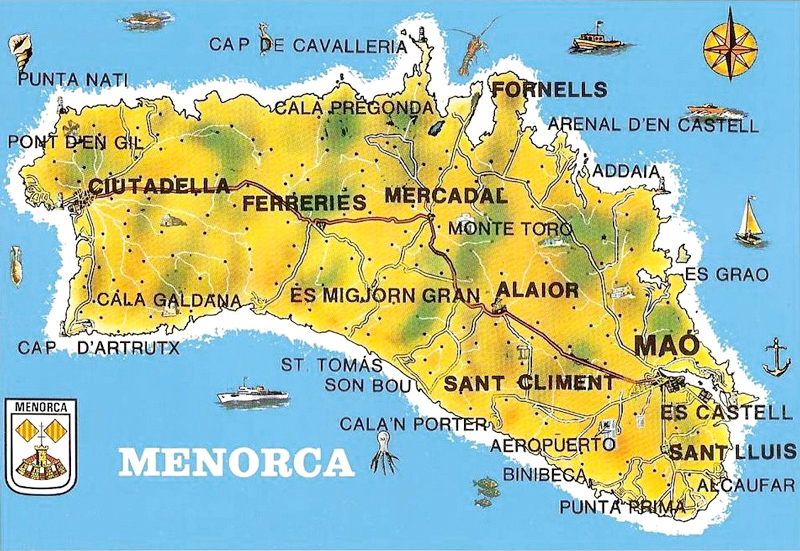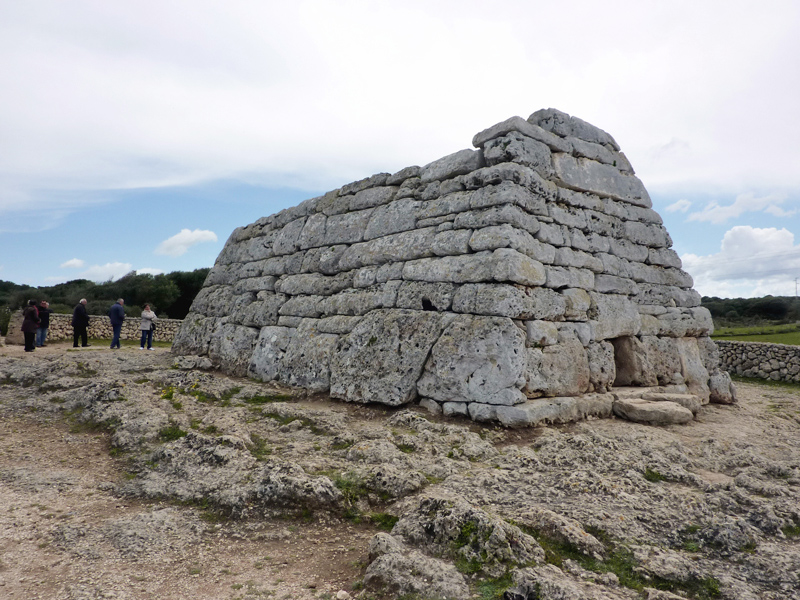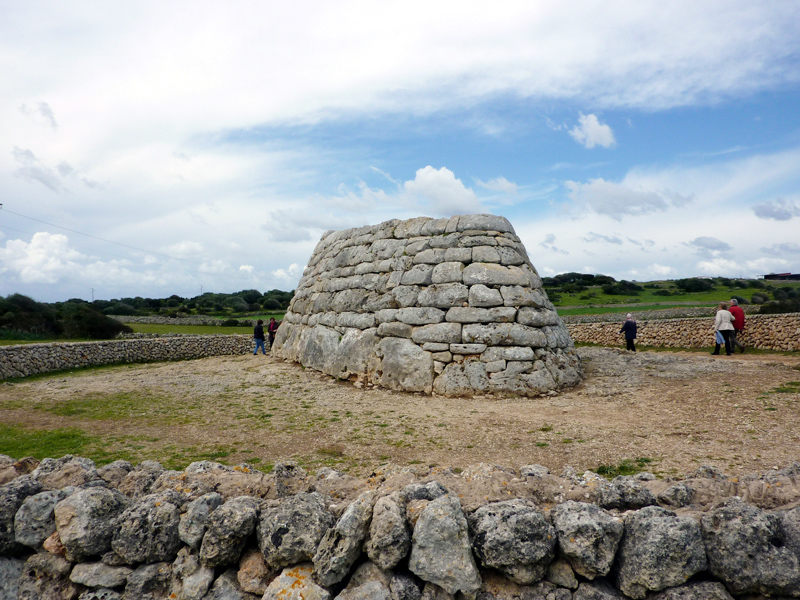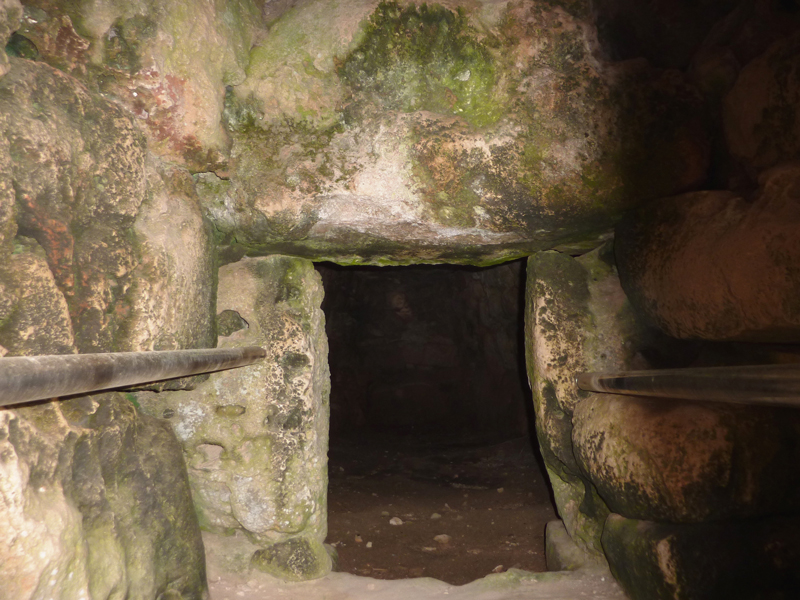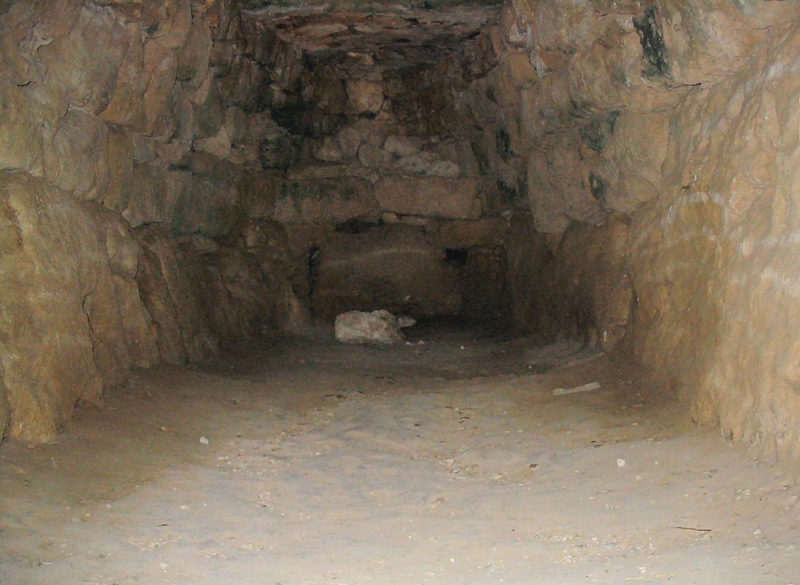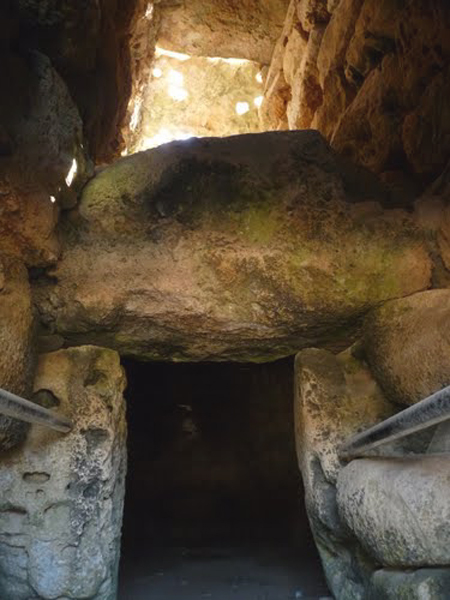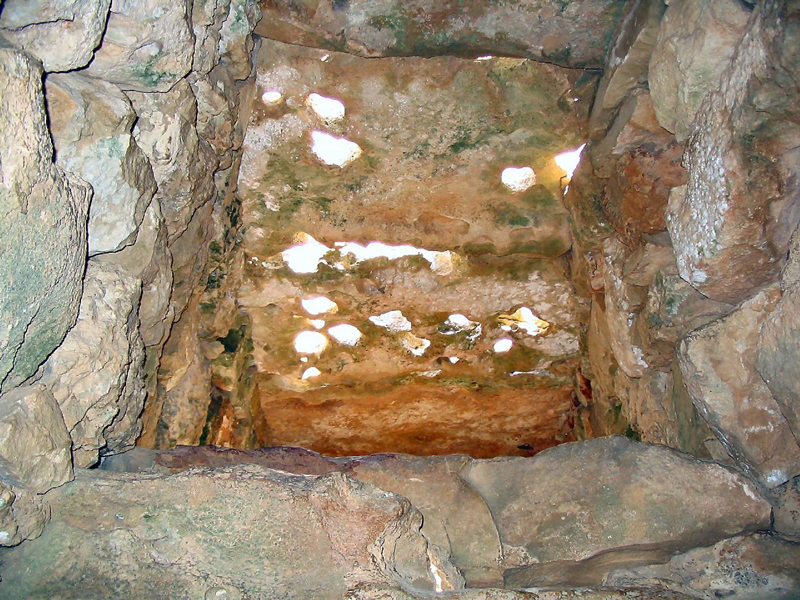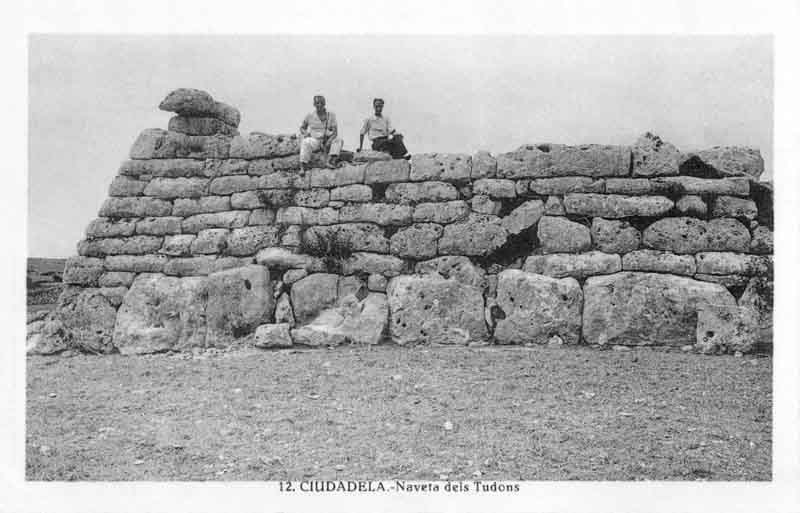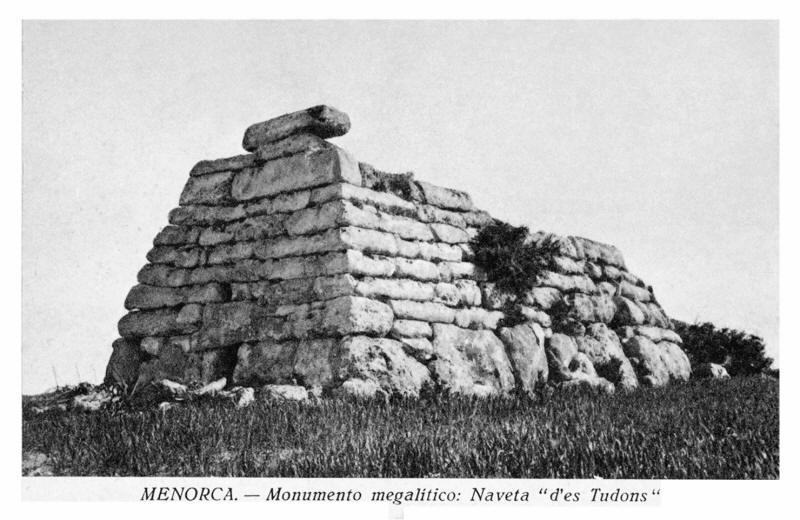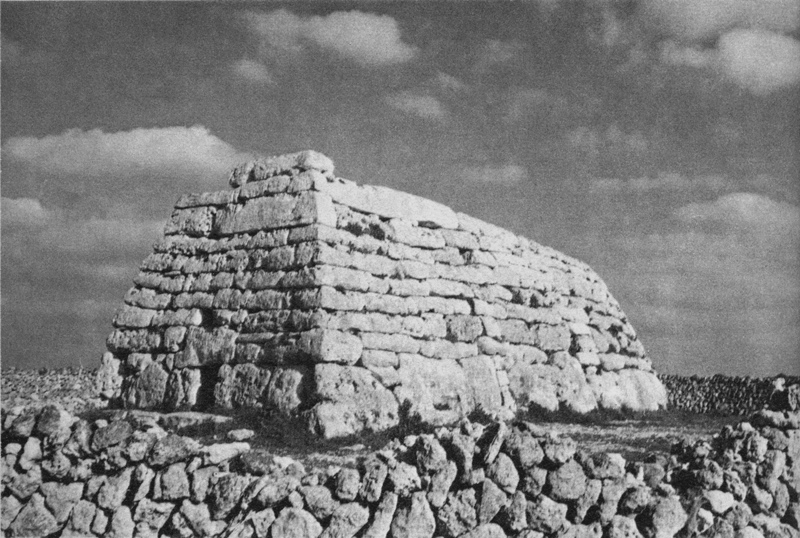 THE NAVETA OF ES TUDONS AT MENORCA, BALEARIC ISLANDS, SPAIN Christian Lassure (text), Pierre Dominguez (photos) The Naveta d'Es Tudons, or Naveta of Es Tudons (from the Menorqui language naveta, or naueta (plural navetes or nauetes), a diminutive form of nau, "nave", and Es Tudons, lit. "the woodpigeons", being the name of the place) (1), is the most remarkable megalithic chamber tomb of the Balearic island of Menorca, Spain.
It is located in the Western part of the island, on the Ciutadella de Menorca-Mahón road, approximately 3 miles out from Ciutadella, and 200 m south of the road. It stands on slightly rising ground in a sloping valley. HISTORICAL AND CULTURAL BACKGROUND The Naveta d'Es Tudons is the largest and best preserved funerary naveta in Menorca. It was described for the first time in the early 19th century but was left unexcavated until 1959.
Navetes were first given their name by the rather imaginative Dr Juan Ramis (1818) from their resemblance to upturned boats but there is reason to believe that the form is that of a house of the period when these edifices were built. In Menorca and Majorca there are several dozen navetes, some of which similarly comprise two storeys. Radiocarbon dating of the bones found in the different navetes in Menorca indicate a usage period between about 1130-820 BC. The usage period of the Naveta d'Es Tudons is 1000-800 BC (Talaiotic II). EXTERIOR MORPHOLOGY The shape of the Naveta d'Es Tudons is that of a boat upside down, with the bow as its rounded apse, the stern as its trapezoidal façade and the sides its long walls. The groundplan is an overly elongated semicircle or a stretched horseshoe.
Externally, the edifice is 14.5 m long by 6.5 m wide and 4.55 m high but it would originally have been 6 m high. It is orientated SWS/ENE, the entrance being at the SWS, in the centre of the façade.
The façade is slightly convex. It is markedly sloped and so are the side walls and apse. STONEWORK The front, side walls and apse consist of successive horizontal courses of huge limestone blocks dressed with a hammer and fitted together withour mortar, with an all-round foundation course of blocks of even greater size laid on edge. The blocks' exterior facings are bevelled so as to obtain a sloped wall face. The interior blocks are bevelled so as to obtain a corbelled wall face.
INTERNAL STRUCTURE The narrow, low entrance doorway (0.57 m x 0.75 m) is rebated so to receive a closing slab.
The once sealed-off entrance leads by a short passage to an antichamber 1.3 m long and then another short passage to the main or lower chamber (7.45 m x 2.45 m), the ceiling of which is made of giant horizontal slabs inserted into the side walls, with an average span of 1.5 m c. 2.25 m above the floor. The far end of the chamber is occupied by a sort of stone bench.
Above the main chamber is an upper chamber which is accessible from the upper part of the antichamber. It is slightly shorter (7.10 m) and narrower (1.90 m), with a similar although much lower (0.85 m) ceiling of horizontal slabs. These have holes in them, presumably for ventilation (unless they result from multisecular limestone erosion).
USE The Naveta d'Es Tudons is an ossuary which was used between 1000 and 800 BC. The lower chamber was for stashing the disarticulated bones of the dead after the flesh had been removed while the upper chamber was presumably for drying recently placed corpses. When the naveta was excavated by archaeologist Lluís Pericot García in 1959, it was found to contain the remains of at least 100 skeletons (one with trepanned skull) and various objects like bronze bracelets or bone and ceramic buttons. These objects are on display in the Museu de Menorca in Mahón. Folkloric memories of the navetes' original purpose survived into modern times, for Menorcans were loathe to go near these odd-looking and solitary monuments until well into the nineteenth century. CONSERVATION The monument was listed on 3 June 1931 in the Spanish heritage register of Bienes de Interés Cultural under the reference RI-51-0003442. It was restored in 1960, with the two or three missing courses at the top being put back in place.
For protection, it is surrounded at a distance by a recently restored modern dry stone field wall (2).
Currently the Naveta d'Es Tudons is open to the public for visits (except for its interior). It is one of the main tourist attractions of Menorca. NOTES (1) Nau d'Es Tudons (« nef d'Es Tudons ») is also encountered. (2) « Inutile de vous extasier sur le mur de pierre sèche qui entoure la Naveta, il est de construction récente » ("There is no need for one to enthuse about the dry stone wall surrounding the Naveta, its construction is recent"), claim Dominique Auzias and Jean-Paul Labourdette, in Baléares, Ibiza — Minorque — Majorque (Le Petit Fûté, 2012, 336 p., p. 281). SOURCES Lagarda i Mata, Ferran. Es Tudons. Menorcaweb.net. Tektonika, a photo gallery - an exhibit of photographs of the stonework of the Balearic Islands & the Catalan mainland. Stonefoundation.org. Émile Cartailhac, Monuments primitifs des îles Baléares, É. Privat, Toulouse, 1892. T. Eric Peet, Rough Stone Monuments and Their Builders, Harper & Brothers, London, 1912 (chap. France, Spain and Portugal ) Leslie V. Grinsell, Barrow, pyramid, and tomb : ancient burial customs in Egypt, the Mediterranean, and the British Isles. Boulder, Westview Press, Colorado,1975, pp. 193-195. Georg Gerster, The Past from Above: Aerial Photographs of Archaeological Sites (Charlotte Trümpler, ed.), Getty Publications, Los Angeles, California, 2007, p. 250. Dominique Auzias et Jean-Paul Labourdette, Baléares, Ibiza — Minorque — Majorque, Le Petit Fûté, 2012, 336 p., p. 281. We extend our warmest thanks to Roger Chenard (roger.chenard[at]aliceadsl.fr) for his help in the genesis of this article. To print, use landscape mode © CERAV To be referenced as : Christian Lassure (text), Pierre Dominguez (photos)
|
